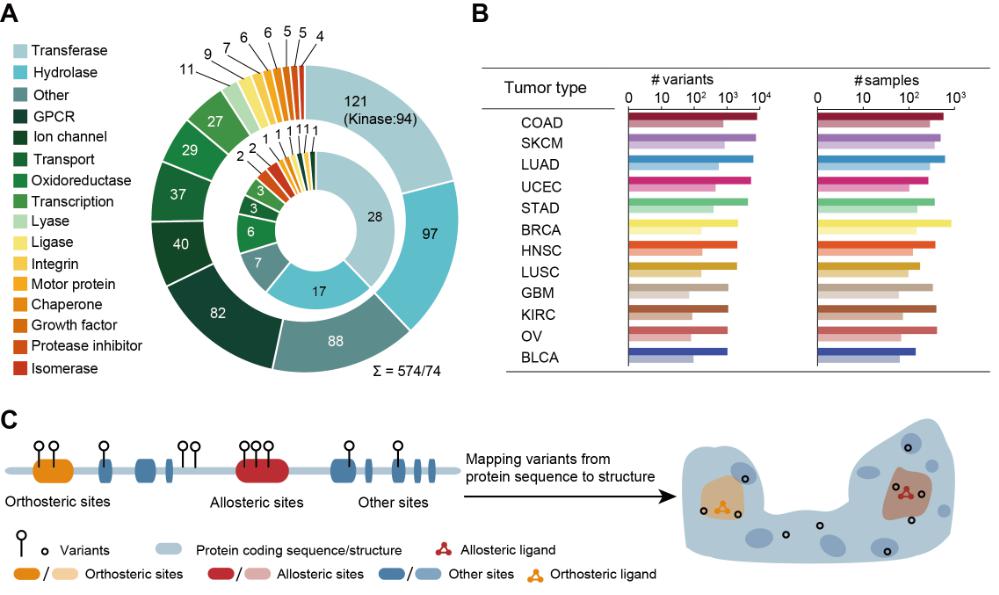Shanghai Jiaotong University researched tumor accurate identification and won new target results
The internationally renowned academic journal American Journal of Human Genetics (AJHG, IF=10.794) published the first issue of the first phase of 2017 in Shanghai Jiao Tong University School of Medicine, Cellular Differentiation and Apoptosis, Zhang Jian, the latest achievement in the field of allosterics Proteome- Scale investigation of protein allosteric regulation perturbed by somatic mutations in 7,000 cancer genomes, which reported the development of a method for accurately identifying novel targets of various types of tumors through the allosteric mapping of large-scale tumor genomes on protein structures, and using this method to find non-small cells A new target for lung cancer, PDE10A. With the development of precision medicine, identifying new targets unique to various tumor subtypes has become an important prerequisite for targeted drug development. With the accumulation of genomic data in a large number of clinical tumor patients, the high-intensity data of tumor genomes are analyzed, and genes (Drivergenes) and their expressed proteins related to each subtype of tumors or driving tumorigenesis are identified, and then existing drugs or new developments are utilized. Targeting this protein target by small molecules, providing individualized treatment for this type of patient has become a new trend in drug discovery in the era of precision medicine. Allostery refers to the phenomenon that the allosteric site away from the protein substrate site binds to regulate small molecules, thereby regulating the function of the protein substrate, and is a widely-existing and important regulation in living organisms. mechanism. In this work, Zhang Jian et al analyzed 7000 clinical patient genomes of 33 types of tumors, mapped more than 47,000 identified mutation data to the discovered protein structure, and found that the mutations in these tumor genome samples were mainly concentrated in the protein. The allosteric site and the substrate site. Based on this phenomenon, they designed the AlloDriver method to identify new targets for different tumors based on the distribution of mutations mapped to allosteric sites. Using this method, they discovered a novel target for non-small cell lung cancer, PDE10A (Note: PDE10A is a known drug target for the treatment of psychiatric diseases), and it has been proved by chemical biology methods that PDE10A has been marketed. Killing non-small cell lung cancer cell lines provides a new way for the treatment of non-small cell lung cancer.
Medical Cold Patch
Throat Pain Relief Patch,Throat Pain Relief Pad,Throat Pain Relief Plaster,Antitussive Patch Shandong XiJieYiTong International Trade Co.,Ltd. , https://www.xjpatches.com
Throat Pain Relief Patch
[Name] Medical Cold Patch
[Package Dimension] 36 round pieces
The pain relief patch is composed of three layers, namely, backing lining, middle gel and protective film. It is free from pharmacological, immunological or metabolic ingredients.
[Scope of Application] For cold physiotherapy, closed soft tissue only.
[Indications]
The patches give fast acting pain relief for acute and chronic tonsillitis.
[How To Use a Patch]
Please follow the Schematic Diagram. One piece, one time.
The curing effect of each piece can last for 6-8 hours.
[Attention]
Do not apply the patch on the problematic skin, such as wounds, eczema, dermatitis,or in the eyes. People allergic to herbs and the pregnant are advised not to use the medication. If swelling or irritation occurs, please stop using and if any of these effects persist or worsen.notify your doctor or pharmacist promptly. Children using the patch must be supervised by adults.
[Storage Conditions] Store below 30c in a dry place away from heat and direct sunlight.